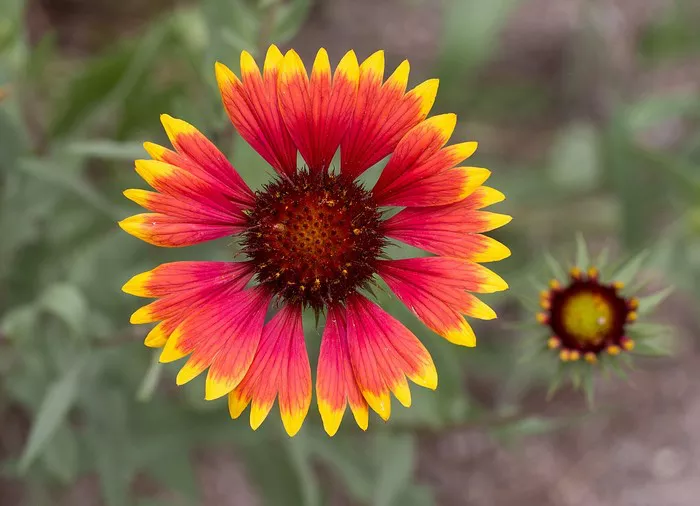Blanket flowers, scientifically known as Gaillardia, are cherished for their vibrant hues and ability to thrive in various garden settings. While these perennial beauties can enhance the visual appeal of outdoor spaces, pet owners must exercise caution when introducing them to environments shared with dogs. This article delves into the potential toxicity of blanket flowers to dogs, shedding light on the risks, symptoms, and preventive measures to ensure the safety and well-being of our beloved canine companions.
Understanding Blanket Flowers
Blanket flowers, belonging to the Asteraceae family, are renowned for their striking daisy-like blooms. These plants, characterized by their vibrant red, orange, and yellow petals, are commonly found in gardens, adding a splash of color to landscapes. Blanket flowers are relatively low-maintenance, making them a popular choice among garden enthusiasts. However, their allure raises questions about their compatibility with canine cohabitants.
Toxic Compounds in Blanket Flowers
Blanket flowers, like many plants, contain compounds that can be harmful to dogs if ingested. The primary concern lies in the presence of certain alkaloids and glycosides that, when consumed by dogs, can lead to adverse effects. These compounds can have varying degrees of toxicity, depending on the amount ingested and the size of the dog.
Symptoms of Blanket Flower Toxicity in Dogs
Identifying the symptoms of blanket flower toxicity in dogs is crucial for prompt intervention. Common signs of poisoning include gastrointestinal distress, such as vomiting and diarrhea, as well as lethargy, lack of appetite, and in severe cases, difficulty breathing. Recognizing these symptoms early can significantly improve the chances of successful treatment.
Immediate Actions for Suspected Blanket Flower Ingestion
If there is a suspicion that a dog has ingested blanket flowers, swift action is essential. Contacting a veterinarian immediately is crucial, providing them with information such as the dog’s size, the quantity of ingested plant material, and the onset of symptoms. In some cases, inducing vomiting may be recommended, but only under the guidance of a veterinary professional.
Treatment Options for Blanket Flower Toxicity
The treatment for blanket flower toxicity in dogs depends on the severity of the symptoms. Veterinarians may administer activated charcoal to absorb the toxic compounds, intravenous fluids to prevent dehydration, and medications to alleviate specific symptoms. In severe cases, hospitalization and intensive care may be necessary. Early intervention significantly improves the prognosis for a full recovery.
Preventive Measures for Canine Safety
Preventing blanket flower toxicity in dogs starts with awareness and proactive measures. Here are some key steps pet owners can take to ensure their canine companions are safe in environments where blanket flowers are present:
1. Identification: Familiarize yourself with blanket flowers and their distinctive features to easily recognize them in your garden or outdoor spaces.
2. Secure Enclosures: If possible, create secure enclosures or designated areas within your garden where dogs can roam freely without access to potentially harmful plants.
3. Training: Train dogs to avoid consuming plants and provide positive reinforcement when they exhibit appropriate behavior. This can be particularly useful for curious or young dogs.
4. Supervision: Always supervise dogs when they are outdoors, especially in areas with a variety of plants. Prompt intervention can prevent the ingestion of toxic substances.
5. Consult with Veterinarians: Before introducing new plants to your garden, consult with your veterinarian to ensure they are safe for your specific pet. Professional advice can help you make informed decisions about your garden’s flora.
6. Pet-Friendly Alternatives: Consider planting dog-friendly alternatives that pose no threat to your canine companions. This ensures a beautiful garden without compromising on safety.
Conclusion
While blanket flowers contribute to the aesthetic appeal of gardens, pet owners must be mindful of their potential toxicity to dogs. Understanding the risks, recognizing symptoms, and implementing preventive measures are essential aspects of responsible pet ownership. By taking proactive steps and staying informed, individuals can create safe and enjoyable environments for both their gardens and their beloved canine companions. Remember, when it comes to our pets’ well-being, knowledge and diligence are the best defenses against potential hazards.


